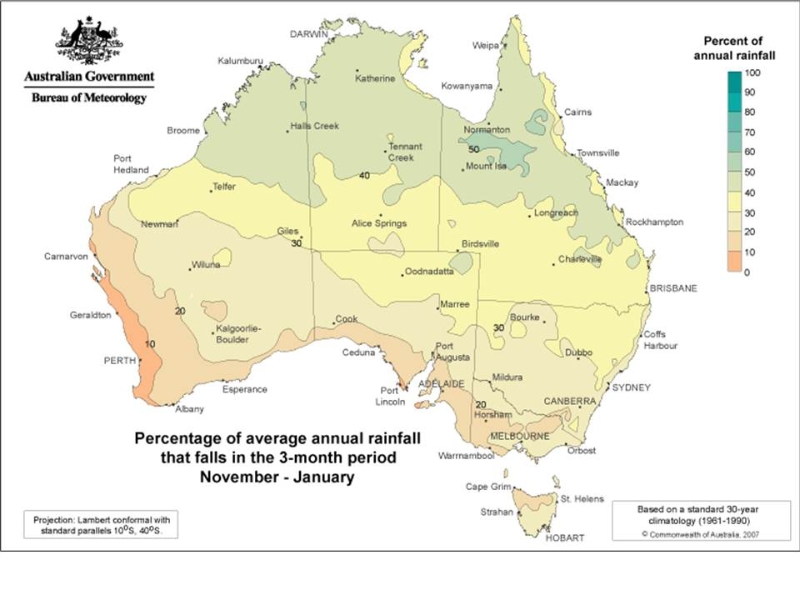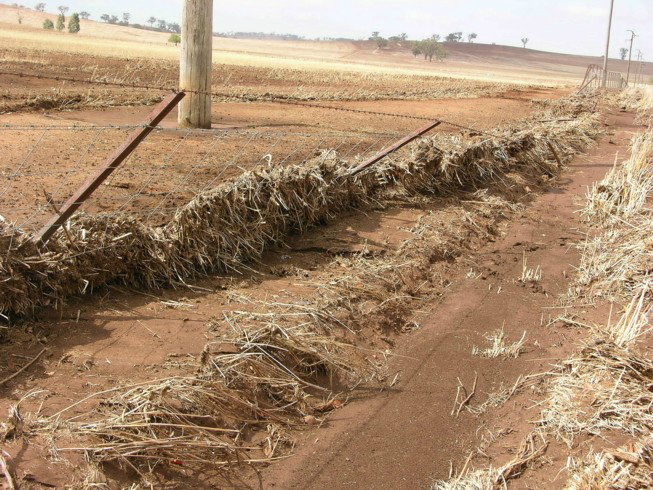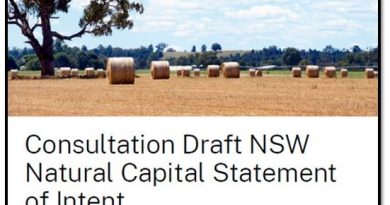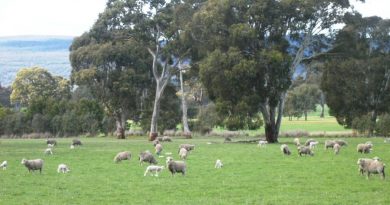Preserving summer rain’s value with stubble and herbicides
The following GRDC Fact Sheet presents some interesting data about impacts of stubble and weeds on plant available water for subsequent crops. It is unfortunate that the author fails to take an holistic perspective because summer rain which often occurs in high intensity storms is common across south eastern Australia so its potential for adding to soil moisture as well as causing serious erosion are high. The discussion should not centre around one strategy or another, it’s a combination which will produce the best outcomes for soil water holding capacity, soil health, above and below ground biodiversity and environmental integrity of the paddock. Some of the data about effective above ground dry matter mass for maximising rainfall infiltration and soil protection seem just as relevant to pasture paddocks as they do for crop paddocks. – Patrick Francis
The value of summer rain to the following crop is influenced by:
- soil type;
- timing and intensity of rainfall;
- summer paddock management; and
- the amount of growing season rainfall received in the following season.

Of these factors growers can only influence summer paddock management. Six research projects in the GRDC Southern Region are currently quantifying the value of weed control, stubble retention, grazing and cultivation during summer on the conservation of summer rainfall for winter crops.
The crop model APSIM was used to compare anticipated wheat yields from 1889 to 2008 with or without stored subsoil moisture at sowing, for 37 locations in Western Australia, South Australia, Victoria and New South Wales. For a range of sites, the model used real rainfall data, appropriate varieties and sowing times.
The model showed that on average an additional eight to 106 millimetres of plant available water (PAW) could be provided to winter crops by summer rain, depending on the site. This could boost yields by an average 0.2 to 2.3t/ha in ideal conditions. In low-rainfall areas, the presence of subsoil moisture at sowing significantly reduces the production risk of grain growing.
For example, at Quorn in the upper north of SA (average annual rainfall 330mm), the chance of achieving wheat yields above 2t/ha (when PAW is below average at sowing) is one year in 10. If PAW is above average, the odds are better than six in 10 years.
The benefits from subsoil moisture are highest in years or sites with low growing season rainfall. The proportion of summer rainfall that is available to the following crop at seeding is defined as the summer fallow efficiency.
Summer weed control
Controlling summer weeds is the single most effective way to maximise the summer fallow efficiency. This is because weeds extract moisture and nutrients from deep in the soil profile. Heavy weed infestations remove the most water and nitrogen.

In contrast, soil evaporation only removes water from the topsoil to a depth of 200 to 300mm.
Trials in south-eastern Australia have shown that investing in summer weed control is one of the most profitable inputs to be made. Summer weed control conserves stored soil moisture and nitrogen. However, returns vary with soil type, timing of summer rainfall and season.
In low-rainfall areas across Australia, growers are likely to gain financially from summer weed control, according to APSIM simulations. In low-rainfall areas there is a 70 to 99 per cent chance of making a profit from summer weed control.
The greatest impact was calculated in areas with a high proportion of summer rain, such as the central-west in NSW. The highest return on investment for summer weed control is likely to be on lighter soils or where soil water that would support continued weed growth is already present; for example, pulse stubbles or long fallows.
In high-rainfall areas, the potential for an economic return is lower and more variable. The chance of making a profit from summer weed control ranges between 30 and 80 per cent.
The role of stubble
Stubble is retained for a number of reasons, including to protect the soil surface from erosion, to return organic matter and to reduce surface evaporation. Trials in south-eastern Australia have found that in comparison to controlling summer weeds, retaining stubble has little impact on preserving summer rainfall.
Only one in 13 experiments showed an improvement. Retaining stubble resulted in better rainfall infiltration rates and less run-off during heavy rain, rather than reducing evaporation. While soil evaporation after rain can be slowed by stubble, there is a limit on its ability to retain moisture in summer.
Soils will dry out after an extended dry period, regardless of whether stubbles are retained, unless stubble loads are heavy. Figures show the impact of different amounts of wheat straw on the cumulative water evaporation from moist soil at a likely evaporation rate (evaporative potential) of 7mm per day.
It also shows that at least 5t/ha of stubble is required to reduce evaporation. Research in WA found that stubble loads less than 3t/ha provided little benefit to storing summer rainfall.
Following marginal planting rains, retained stubble can help to slow evaporation leading to a longer sowing window and better crop establishment.
Stubble is likely to provide most benefit to fallow efficiency where summer rain is intense on soils with low infiltration rates or on sloping country. At least 2t/ha of cereal stubble or 70 per cent stubble cover is thought to be the minimum needed to prevent wind and water erosion on a slope of up to eight per cent.
Whether stubbles were slashed, flattened or left standing made no difference to yields, fallow efficiency or crop growth in the trials. However, standing stubble is thought to be more effective in reducing wind erosion and can generally result in less blockages at seeding.
Source: GRDC Facts sheet:




I know that this article isn’t focused on pasture and grazing, in spite of the wrap up picture that compares bare ground with “comprehensive dry matter coverage” in pasture.
I’d just like to add, in the context of grazing, that weeds are a really important component of the pasture mix – not something to be dispensed with at every opportunity as the article advocates in the context of cropping.
At the moment, following 40mm in mid-January, our pasture is being enhanced by the germination of various forbs in addition to summer grasses like weeping grass, paspalum and (not everyone’s favourite) couch. So in spite of the dry, there’s still enough nitrogen in the cows diet to keep their rumen active – no need for urea or supplementary feeding.
And just in case the reader is thinking I’m a weed freak, I confess to spending a lot of time spraying blackberry and will not leave a bathurst burr in the ground. As for the rest, they seem not to be a bother – in fact the opposite.